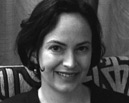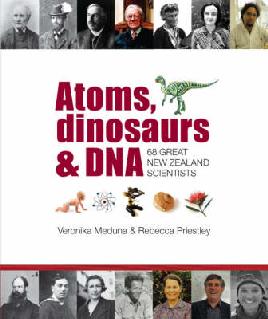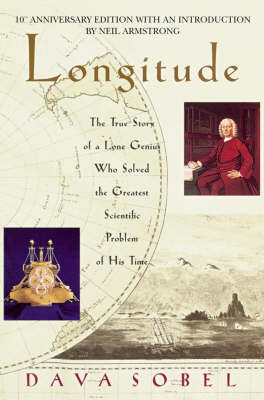Priestley combines science and history
 Rebecca Priestley has collaborated on a book profiling 60 of New Zealand's greatest scientists. She answered questions ahead of The Press Christchurch Writers' Festival where she will be part of the panel discussion Why does the earth move?
Rebecca Priestley has collaborated on a book profiling 60 of New Zealand's greatest scientists. She answered questions ahead of The Press Christchurch Writers' Festival where she will be part of the panel discussion Why does the earth move?
 Your book Atoms, dinosuars and DNA is a lovely mixture of science and history. Do you consider yourself first and foremost a science writer or an historian?
Your book Atoms, dinosuars and DNA is a lovely mixture of science and history. Do you consider yourself first and foremost a science writer or an historian?
-
I guess I'm a science writer first and foremost because it is a more all-encompassing term, but in the last several years the history of science has been my focus; I'd call myself a science historian rather than an historian per se - the disciplines are usually quite separate for some reason.
I have another book out this month too - The Awa Book of New Zealand Science is an anthology of New Zealand science, containing 50 pieces of writing, from Maori Studies head Peter Adds’ description of the ocean voyages of the Maori, to Peter Bland’s 1981 poem about nineteenth-century farmer and naturalist Herbert Guthrie-Smith, to astronomer Karen Pollard’s story of her team’s recent discovery of a planet beyond our own solar system.
- If the way our science books move off the library shelves is any indication, then science seems to becoming a more fashionable topic of late. Why do you think this is?
 I know! I'm glad you see it in the libraries too. I think it started because books like Dava Sobel's Longtitude was so successful. I don't know why that was, but it seems to have become a bit self perpetuating - the books do well so publishers want to commission more popular science. It suits me - the trend has given me plenty of popular science books to review over the last several years and now makes publishers receptive to my book ideas.
I know! I'm glad you see it in the libraries too. I think it started because books like Dava Sobel's Longtitude was so successful. I don't know why that was, but it seems to have become a bit self perpetuating - the books do well so publishers want to commission more popular science. It suits me - the trend has given me plenty of popular science books to review over the last several years and now makes publishers receptive to my book ideas.- There's a session at the writer's festival called The Child that Books Built - which books went into the building of you?
- I read anything and everything as a child but for some reason I loved books about natural disasters. My mother worked at the London Bookshop in Cuba Mall and used her staff discount to bring home lots of books for me and my sister.
The most influential was probably a book called Volcano about recent volcanic eruptions like the Icelandic island of Surtsey that emerged in 1963 - influential because I went on to do a geology degree and eventually travelled to Iceland. I also remember a fabulous book from Arrow book club called Catastrophe, Calamity and Cataclysm, which consisted of a series of gruesome case studies of disasters like floods, tsunamis, earthquakes, volcanoes and so on. It seems a bit worrying now but it was the first book I remember being really thrilled by. That and an illustrated Bible for Children, that my Methodist grandmother gave me to try to rescue me from my heathen upbringing - I think I just loved the drama of it.
As for fiction - I loved the Little House on the Prairie books, they were very formative, and Noel Streatfield's books, and The Lion the Witch and the Wardrobe series … as well as Asterix comics, Mad magazine and worst of all, my grandmother's Women's Weekly magazines, which I read when I was way too young and whose disease-of-the-week stories I now credit for turning me into a lifelong hypochondriac.
I also remember a fabulous kids' literary magazine (sounds pretentious but it was great) I used to subscribe to called Cricket, I think it was monthly, with articles, stories, poems, pictures. It was awesome.
- One of the questions we're asking all participants this year is how they view libraries and how they use libraries? Tell us about your library experience?
- I spend a lot of happy time in libraries. I'm a Canterbury University doctoral student, so I can use the Canterbury library, but I live in Wellington and also have access to the Victoria University Library, which is great. My local library is the Kilbirnie branch of the Wellington Public Library which I use for books for my children, and the occasional novel for me.
But my favourite is the National Library of New Zealand. Atoms, dinosuars and DNA is based on an exhibition Veronika Meduna and I co-curated there in late 2006 and it was a real privilege to spend several months working in a library where you could find almost everything ever published in New Zealand. I especially loved the old naturalists' books like Walter Buller's first and second editions of A History of the Birds of New Zealand and John Buchanan's Native Grasses of New Zealand, where every plate is pressed from an inked piece of dried grass. I found the pieces for my anthology, The Awa Book of New Zealand Science, from many different libraries, including some institutional libraries that hold specialist scientific material. I love libraries, and couldn't do the work I do without them.
August 2008

